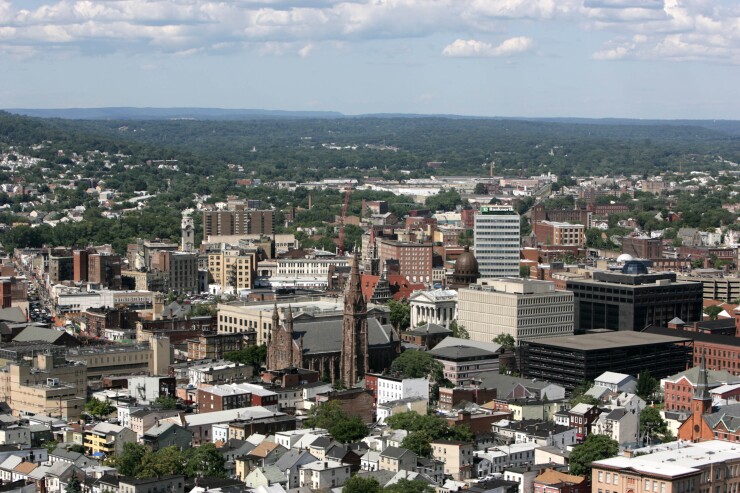A “stabilizing” tax base in Paterson helped New Jersey’s third-most-populous city land a better outlook on its junk-level bond rating.
Moody's Investors Service revised the outlook to stable from negative Tuesday on the city's Ba1 underlying general obligation unlimited tax debt rating. Moody’s also affirmed Patterson’s Baa1 enhanced rating for debt issued under New Jersey’s Municipal Qualified Bond Act program.

“The stable outlook on the underlying rating reflects our expectations that Paterson will be able to at least partially sustain its recent financial improvements, but that challenges remain,” said Moody’s analyst Douglas Goldmacher. “The tax base shows signs of stabilizing and efforts are being made to deal with the blight issue.”
Goldmacher noted that Paterson’s tax base grew for the second straight year in 2017 to $6.5 billion following six straight years of declines. The city has tackled urban blight through a campaign to expedite foreclosure proceedings and either demolish or arrange for the refurbishment of abandoned properties. State programs also offer Paterson as much as $130 million in tax credits for economic development.
“Paterson has some unique challenges as the city has one of the highest population densities in the country,” said Goldmacher. “Despite these challenges, management has reported some considerable progress in tackling certain key issues, most notably the urban blight.”
Goldmacher noted that the city still struggles with a “high degree of mid-year financial operating uncertainty” due to political disputes that have arisen over budgeting that led to a
Paterson has also been grappling with rising fixed costs and an increased reliance on state aid due to low reserves. Goldmacher noted that the city boosted its fund balance based on a Moody’s-adjusted formula to $19.8 million, or 7.1% of revenues in 2016. The city only had $1.1 million of reserves (0.4% of revenues) for the 2012 fiscal year.
Paterson city officials not immediately respond to a request for comment on the Moody’s outlook change. The city, which was once a major manufacturing center, had a population of 146,199 according to the 2010 U.S. Census.





